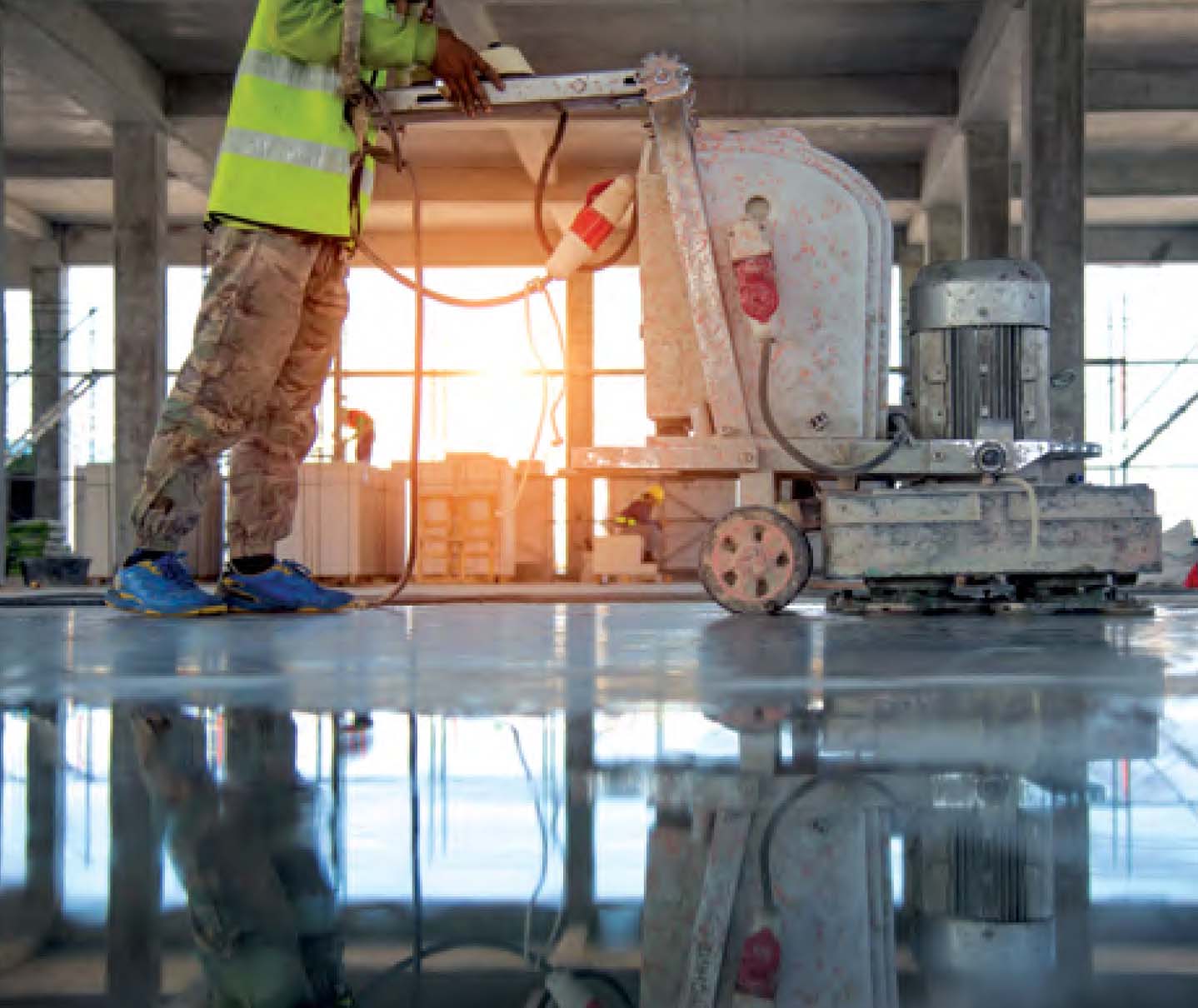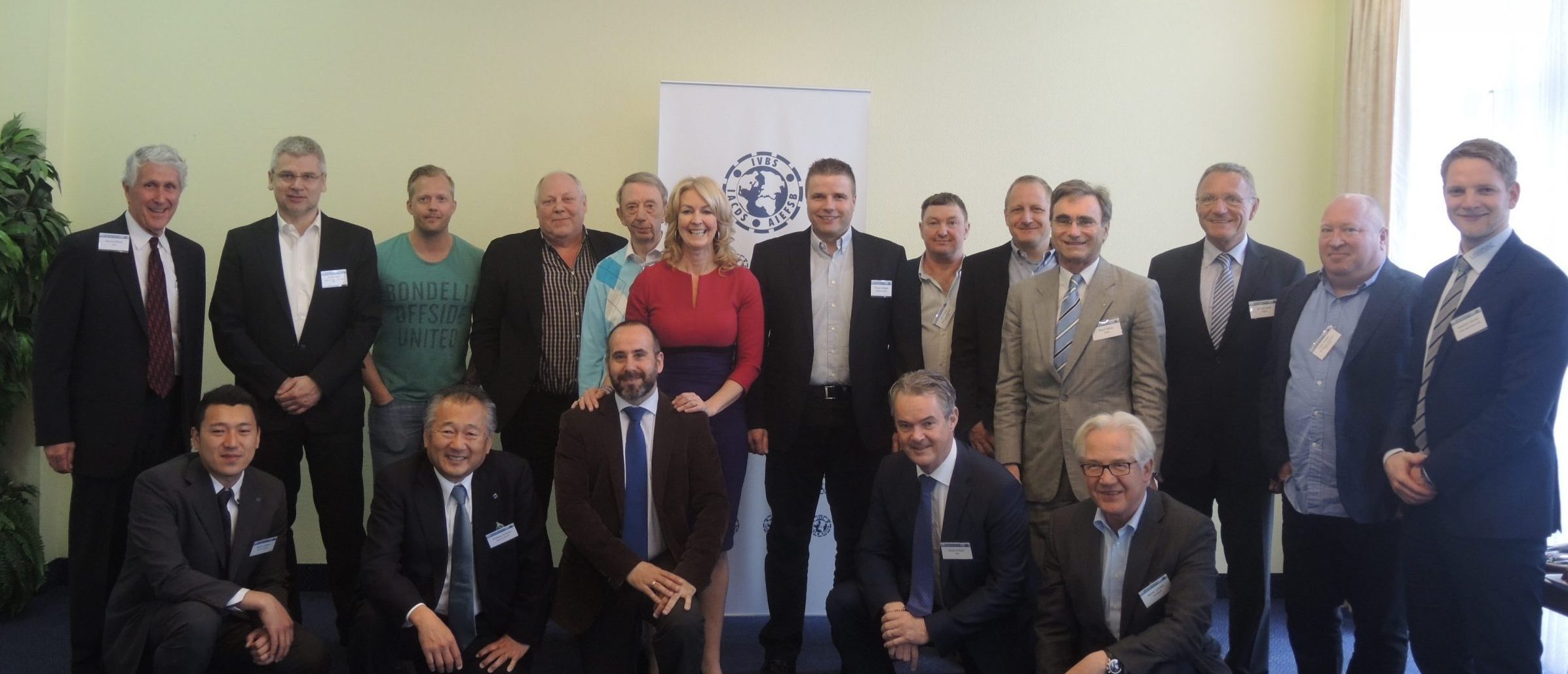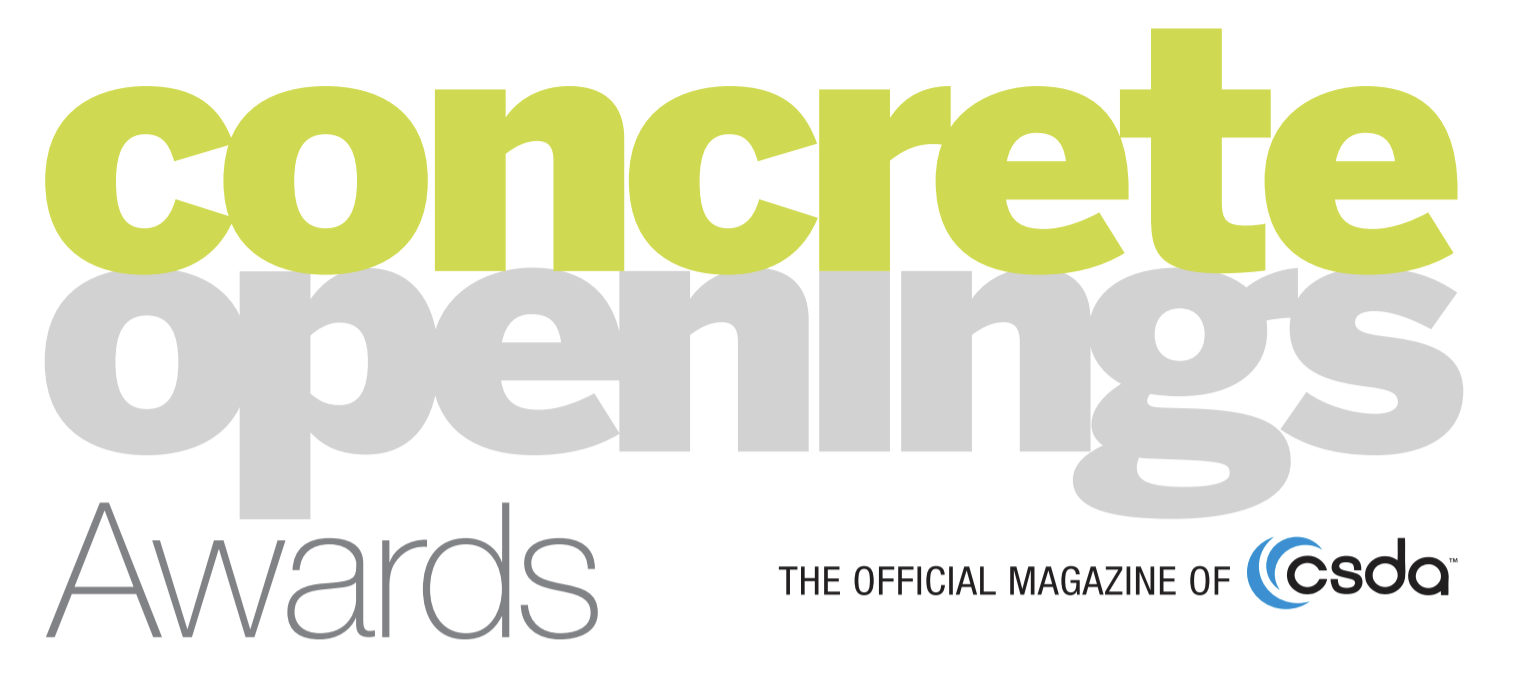
Trends in Decorative Concrete

By Stacey Enesey Klemenc
Decorative concrete, like all things construction related, took a major hit in the Great Recession. Between 2008 and 2011, business was down anywhere from 40 percent to 60 percent for many companies.
“Our industry was decimated by the recession and we are just now recovering,” says Chris Sullivan, vice president of sales and marketing with a Texas corporation that manufactures color and cement-based admixtures for the decorative concrete industry. Last summer was good, he says, and this summer is even better. “Finally, we’re back.”
And he should know. Sullivan, who also manages his company’s product development, has published four books on current trends in decorative concrete. He’s been a columnist for decorative concrete magazines since 2009 and a technical writer since 2008. He’ll be teaching a class September 28 at the upcoming Concrete Décor Show in San Diego titled Emerging Trends in Decorative Concrete.
Polishing is Popular
Hands down, polished concrete is the fastest-growing sector of decorative concrete, mainly in the commercial realm. “It’s been the hottest finish for the last five years and there’s no sign of it slowing down,” Sullivan says. “The concrete can be seeded with different types of aggregate or colored glass to give yet another defining design element. This allows the concrete to look and perform like traditional terrazzo at a much lower price point.”
Although we see a lot of polished and dyed concrete, Sullivan concedes, plain gray is very much a part of the minimalist design many are seeking. Being able to “manipulate plain gray concrete to achieve various design elements is one of the benefits that makes polished concrete so versatile and adds to its popularity among designers and homeowners,” he says.
Polished concrete also melds well with many current design trends. You can easily achieve most any light color, the reflectance of the floor is increased which decreases the need for artificial light and these floors contribute nicely toward U.S. Green Building Council LEED points on green projects.
When it comes to whether polishing should be done wet or dry, many installers have adopted a hybrid approach. Usually they prefer one process over the other, but remain flexible and are willing to adapt when the situation warrants. There is currently no hard set of rules, but general guidelines and specifications are slowly being introduced. Right now, however, most contractors set their own rules based on personal experience and preference.
Trendsetting Uses
In the residential arena, specialty toppings and overlays on existing slabs are the number one treatment requested. Overlays, which are thin coatings applied on existing slabs, can be stamped, polished and even carved. Toppings run the gamut, from clear polymer resin with colored glass or quartz chips, to decorative rubber and embedded seashells.
Customizing decorative concrete is another across-the-board trend. This doesn’t include anything revolutionary or any new products per se. We are seeing installers using existing technology and getting creative. They are blending color with design elements and merging all these elements to form an overall design. Projects before that typically involved two colors now have three or four. Rather than one pattern, there are more combinations with bands and borders.
And the patterns are going big. Large, bold designs are in. Most people are staying away from small, busy patterns and the bright multicolored patterns preferred in the early 2000s are exiting quickly. In their place, most designers are leaning toward subtle designs and soft tones, as well as more industrial gray finishes.
Integrally colored concrete, where the concrete mix is colored all the way through, is still in good graces with the public, but many contractors are combining it with sand or glass or some combination of small aggregates. Light exposures of the aggregate are being used to create elegant finishes by blending colors and aggregates to create visual movement.
Concrete countertops is a segment of the decorative concrete industry that has definitely grown and remains a specialty niche with a gamut of options for both residential and commercial uses. “It’s really become almost an art,” Sullivan says. “There is some really beautiful stuff out there.”
Another gangbuster trend that’s taking the industry by storm involves metallic coatings. “By randomly dispersing metallic pigments in clear high-performance coatings, contractors are getting a one-of-a-kind floor that is both durable and artistic,” Sullivan says. In this instance, vibrant colors win out.
Stamping
Even though stamping is no longer the exciting new kid on the block, it remains a viable hardscape option right up there with pavers and natural stone. When stamped overlays are installed, the trend is the same with microtoppings: they’re simple, clean and natural looking. Natural light earth tones — tan, beige, light brown — are the popular, along with various grays.
As more homeowners are incorporating outdoor living spaces into their residential scheme, more and more traditional stamped concrete installers are starting to offer expanded services to create multifunctional outdoor living spaces that include kitchens, countertops, water features, fireplace or fire pits, seat walls and built-in concrete benches.
While Ashlar slate and large slate patterns in general remain popular choices for residential patios, walkways and pool decks, simulated wood patterns are what folks are clamoring for. “There are some wood patterns out there where the realism is fantastic,” Sullivan says, with companies such as leading the way.
For example, the Bridges of Madison County installation by Proline, Butterfield and Brickform debuted at the World of Concrete 2016, was inspired by the book, movie and Broadway musical of the same name. The stamp is made from real planks and timbers dating back to the late 19th century.
Staining
About seven to 10 years ago, water-based stains made a big splash in the market and some believed it would be the end for acid stains. However, not only are acid-based stains still here, they are flourishing.
Although water-based stains are also here to stay and many praise their ease of use, wide color selection and consistent results. Acid stains can achieve a look you cannot get with any other product, as the acid in the stain chemically reacts with the lime in the concrete to form a natural and unique marbling that is more than surface deep. This unique look has been taken to a new level, thanks to the introduction of new stain and dye technology.
Concrete stains have expanded far beyond interior commercial spaces and are commonplace in the home as well as outdoors. Because of the improvement in stain and sealer technology, more and more contractors are staining exterior concrete.
Advice for Beginners
It is suggested that contractors looking to break into the business focus on a select market and become specialized in one aspect of decorative concrete before trying to branch out. It would be naïve for a contractor to think he or she can enter this market and be able to stain, stamp, polish and create countertops to a high quality. Decorative concrete installers can certainly do more than one thing, but it is unlikely one person can do them all perfectly and be successful.
Regardless of your area of interest, you should learn the basics of concrete. Ultimately, the message is to not stop learning. You need to fully understand the material, from its makeup to finishing techniques and everything in between.














